Foreword by Huilin Jiang
Foreword by Xiangqun Cui
Preface
Acknowledgements
Contents
1 Introduction
1.1 Research Topics of Multidimensional Night-Vision Information Understanding
1.1.1 Data Analysis and Feature Representation Learning
1.1.2 Dimension Reduction Classification
1.1.3 Information Mining
1.2 Challenges to Multidimensional Night-Vision Data Mining
1.3 Summary
References
2 High-SNR Hyperspectral Night-Vision Image Acquisition with Multiplexing
2.1 Multiplexing Measurement in Hyperspectral Imaging
2.2 Denoising Theory and HTS
2.2.1 Traditional Denoising Theory of HTS
2.2.2 Denoising Bound Analysis of HTS with S Matrix
2.2.3 Denoising Bound Analysis of HTS with H Matrix
2.3 Spatial Pixel-Multiplexing Coded Spectrometre
2.3.1 Typical HTS System
2.3.2 Spatial Pixel-Multiplexing Coded Spectrometre
2.4 Deconvolution-Resolved Computational Spectrometre
2.5 Summary
References
3 Multi-visual Tasks Based on Night-Vision Data Structure and Feature Analysis
3.1 Infrared Image Super-Resolution via Transformed Self-similarity
3.1.1 The Introduced Framework of Super-Resolution
3.1.2 Experimental Results
3.2 Hierarchical Superpixel Segmentation Model Based on Vision Data Structure Feature
3.2.1 Hierarchical Superpixel Segmentation Model Based on the Histogram Differential Distance
3.2.2 Experimental Results
3.3 Structure-Based Saliency in Infrared Images
3.3.1 The Framework of the Introduced Method
3.3.2 Experimental Results
3.4 Summary
References
4 Feature Classification Based on Manifold Dimension Reduction for Night-Vision Images
4.1 Methods of Data Reduction and Classification
4.1.1 New Adaptive Supervised Manifold Learning Algorithms
4.1.2 Kernel Maximum Likelihood-Scaled LLE for Night-Vision Images
4.2 A New Supervised Manifold Learning Algorithm for Night-Vision Images
4.2.1 Review of LDA and CMVM
4.2.2 Introduction of the Algorithm
4.2.3 Experiments
4.3 Adaptive and Parameterless LPP for Night-Vision Image Classification
4.3.1 Review of LPP
4.3.2 Adaptive and Parameterless LPP (APLPP)
4.3.3 Connections with LDA, LPP, CMVM and MMDA
4.3.4 Experiments
4.4 Kernel Maximum Likelihood-Scaled Locally Linear Embedding for Night-Vision Images
4.4.1 KML Similarity Metric
4.4.2 KML Outlier-Probability-Scaled LLE (KLLE)
4.4.3 Experiments
4.4.4 Discussion
4.5 Summary
References
5 Night-Vision Data Classification Based on Sparse Representation and Random Subspace
5.1 Classification Methods
5.1.1 Research on Classification via Semi-supervised Random Subspace Sparse Representation
5.1.2 Research on Classification via Semi-supervised Multi-manifold Structure Regularisation (MMSR)
5.2 Night-Vision Image Classification via SSM–RSSR
5.2.1 Motivation
5.2.2 SSM–RSSR
5.2.3 Experiment
5.3 Night-Vision Image Classification via P-RSSR
5.3.1 Probability Semi-supervised Random Subspace Sparse Representation (P-RSSR)
5.3.2 Experiment
5.4 Night-Vision Image Classification via MMSR
5.4.1 MR
5.4.2 Multi-manifold Structure Regularisation (MMSR)
5.4.3 Experiment
5.5 Summary
References
6 Learning-Based Night-Vision Image Recognition and Object Detection
6.1 Machine Learning in IM
6.1.1 Autoencoders
6.1.2 Feature Extraction and Classifier
6.2 Lossless-Constraint Denoising Autoencoder Based Night-Vision Image Recognition
6.2.1 Denoising and Sparse Autoencoders
6.2.2 LDAE
6.2.3 Experimental Comparison
6.3 Integrative Embedded Night-Vision Target Detection System with DPM
6.3.1 Algorithm and Implementation of Detection System
6.3.2 Experiments and Evaluation
6.4 Summary
References
7 Non-learning-Based Motion Cognitive Detection and Self-adaptable Tracking for Night-Vision Videos
7.1 Target Detection and Tracking Methods
7.1.1 Investigation of Infrared Small-Target Detection
7.1.2 Moving Object Detection Based on Non-learning
7.1.3 Researches on Target Tracking Technology
7.2 Infrared Small Object Detection Using Sparse Error and Structure Difference
7.2.1 Framework of Object Detection
7.2.2 Experimental Results
7.3 Adaptive Mean Shift Algorithm Based on LARK Feature for Infrared Image
7.3.1 Tracking Model Based on Global LARK Feature Matching and CAMSHIFT
7.3.2 Target Tracking Algorithm Based on Local LARK Feature Statistical Matching
7.3.3 Experiment and Analysis
7.4 An SMSM Model for Human Action Detection
7.4.1 Technical Details of the SMSM Model
7.4.2 Experiments Analysis
7.5 Summary
References
8 Colourization of Low-Light-Level Images Based on Rule Mining
8.1 Research on Colorization of Low-Light-Level Images
8.2 Carm
8.2.1 Summary of the Principle of the Algorithm
8.2.2 Mining of Multi-attribute Association Rules in Grayscale Images
8.2.3 Colorization of Grayscale Images Based on Rule Mapping
8.2.4 Analysis and Comparison of Experimental Results
8.3 Multi-sparse Dictionary Colorization Algorithm Based on Feature Classification and Detail Enhancement
8.3.1 Colorization Based on a Single Dictionary
8.3.2 Multi-sparse Dictionary Colorization Algorithm for Night-Vision Images, Based on Feature Classification and Detail Enhancement
8.3.3 Experiment and Analysis
8.4 Summary
References

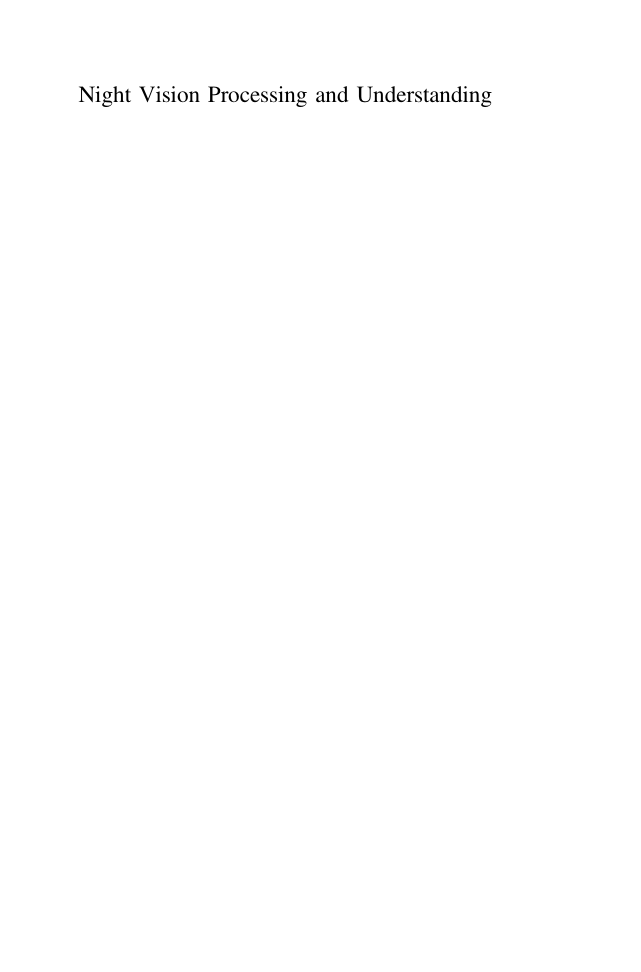
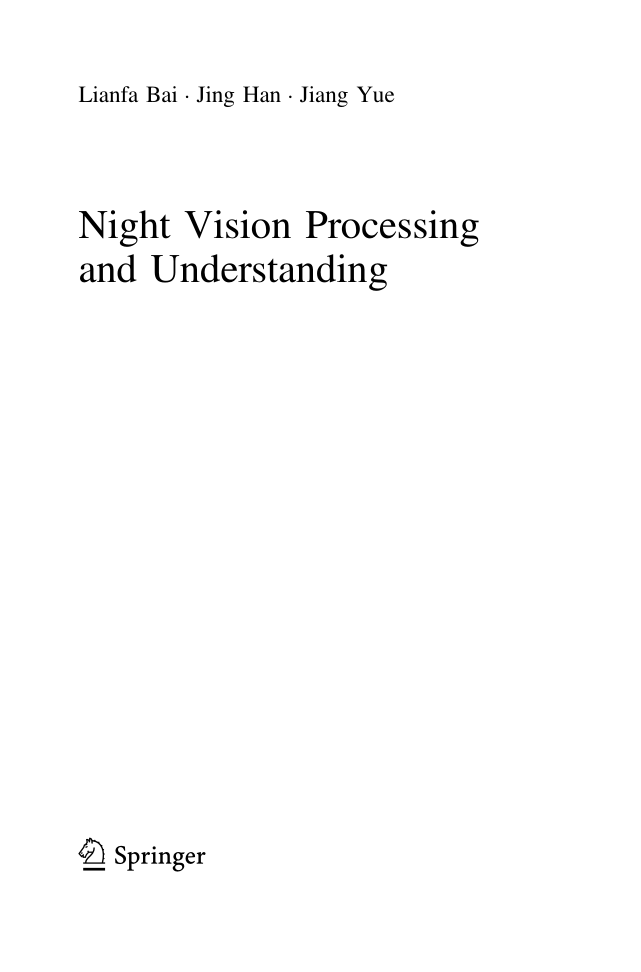
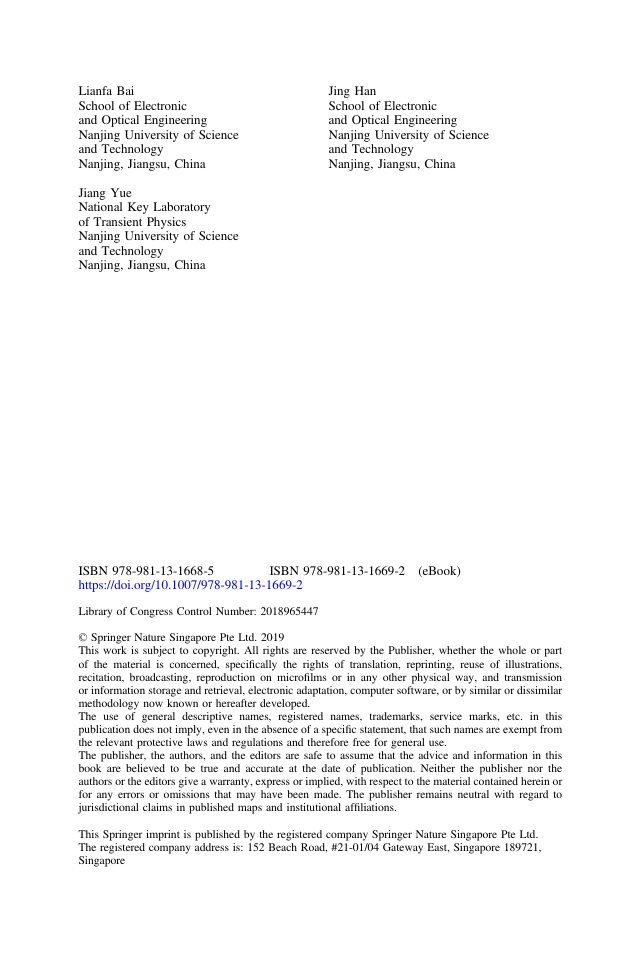
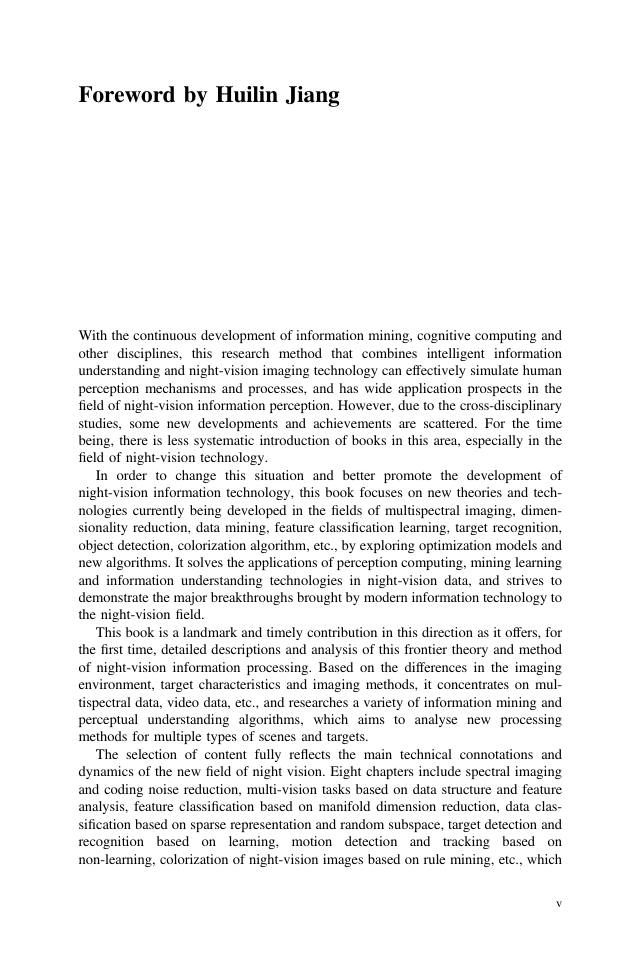
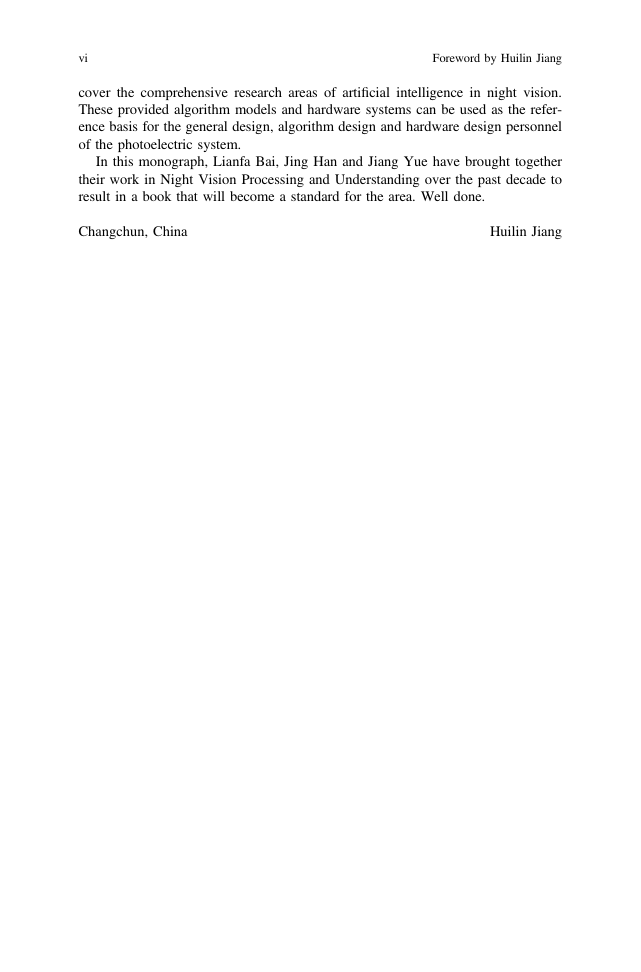
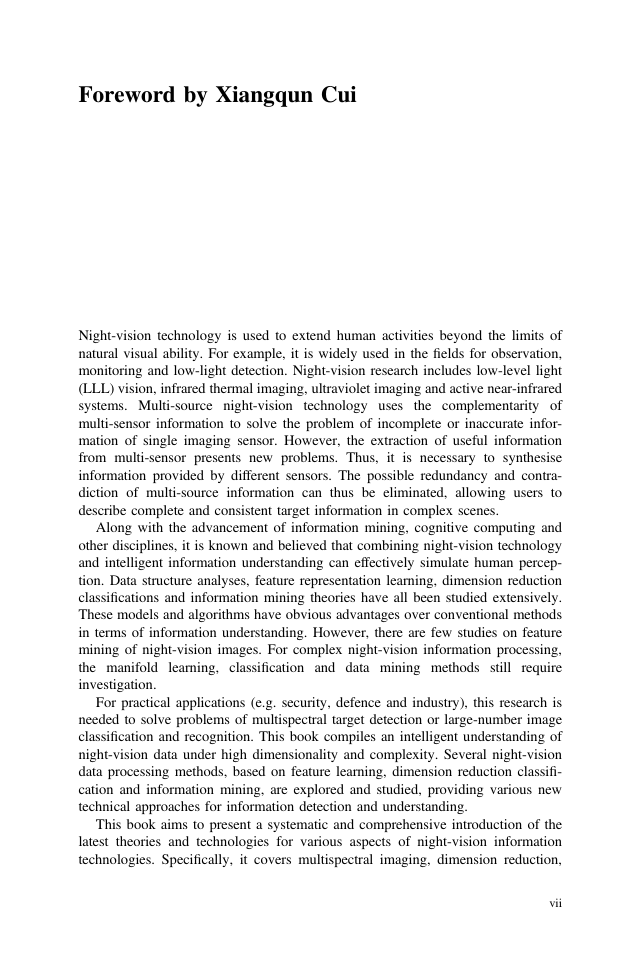









 2023年江西萍乡中考道德与法治真题及答案.doc
2023年江西萍乡中考道德与法治真题及答案.doc 2012年重庆南川中考生物真题及答案.doc
2012年重庆南川中考生物真题及答案.doc 2013年江西师范大学地理学综合及文艺理论基础考研真题.doc
2013年江西师范大学地理学综合及文艺理论基础考研真题.doc 2020年四川甘孜小升初语文真题及答案I卷.doc
2020年四川甘孜小升初语文真题及答案I卷.doc 2020年注册岩土工程师专业基础考试真题及答案.doc
2020年注册岩土工程师专业基础考试真题及答案.doc 2023-2024学年福建省厦门市九年级上学期数学月考试题及答案.doc
2023-2024学年福建省厦门市九年级上学期数学月考试题及答案.doc 2021-2022学年辽宁省沈阳市大东区九年级上学期语文期末试题及答案.doc
2021-2022学年辽宁省沈阳市大东区九年级上学期语文期末试题及答案.doc 2022-2023学年北京东城区初三第一学期物理期末试卷及答案.doc
2022-2023学年北京东城区初三第一学期物理期末试卷及答案.doc 2018上半年江西教师资格初中地理学科知识与教学能力真题及答案.doc
2018上半年江西教师资格初中地理学科知识与教学能力真题及答案.doc 2012年河北国家公务员申论考试真题及答案-省级.doc
2012年河北国家公务员申论考试真题及答案-省级.doc 2020-2021学年江苏省扬州市江都区邵樊片九年级上学期数学第一次质量检测试题及答案.doc
2020-2021学年江苏省扬州市江都区邵樊片九年级上学期数学第一次质量检测试题及答案.doc 2022下半年黑龙江教师资格证中学综合素质真题及答案.doc
2022下半年黑龙江教师资格证中学综合素质真题及答案.doc